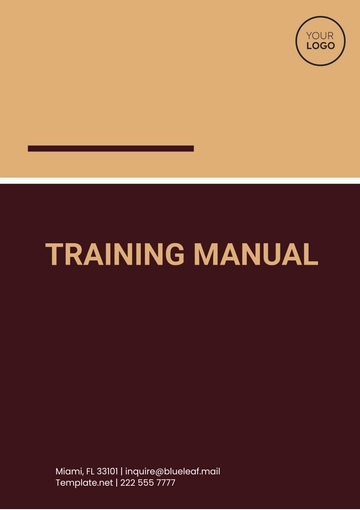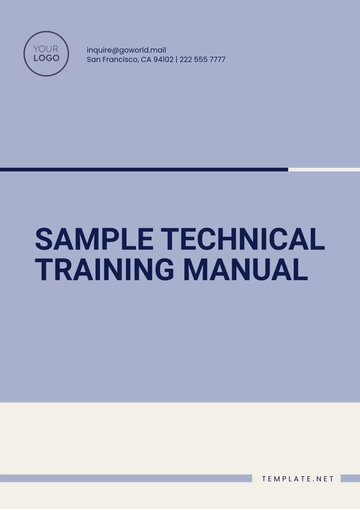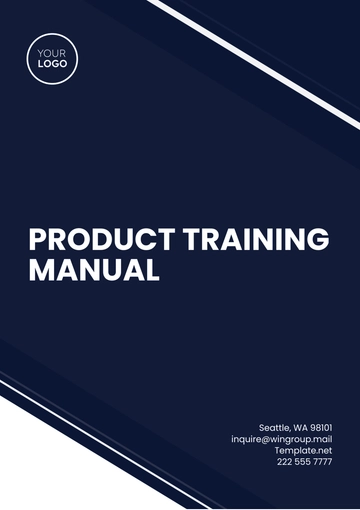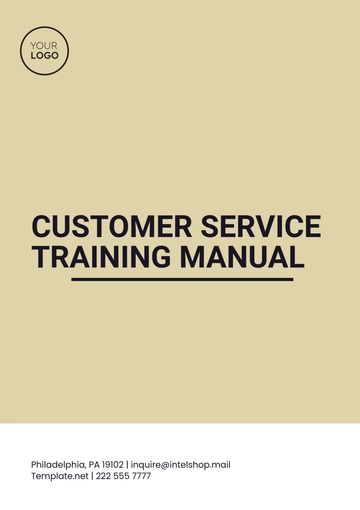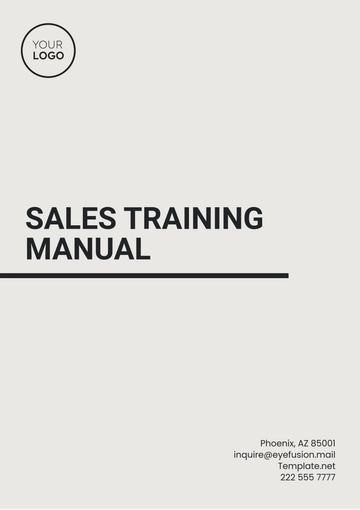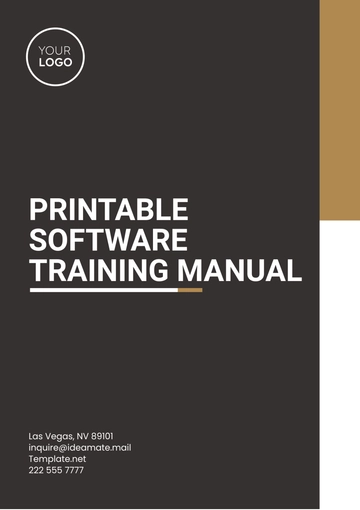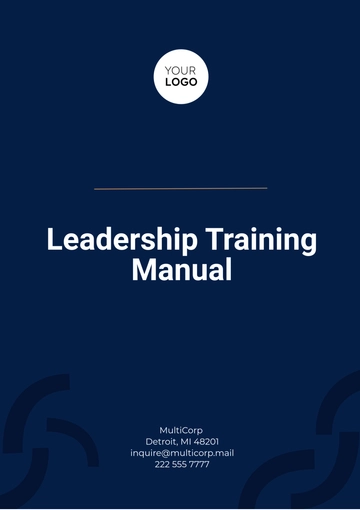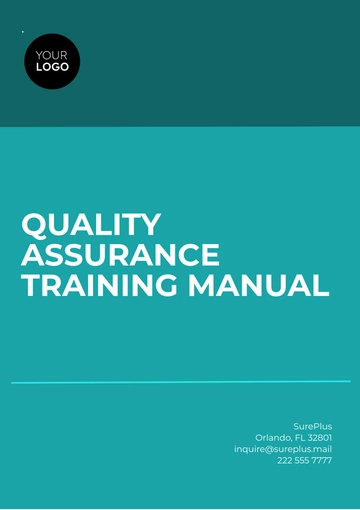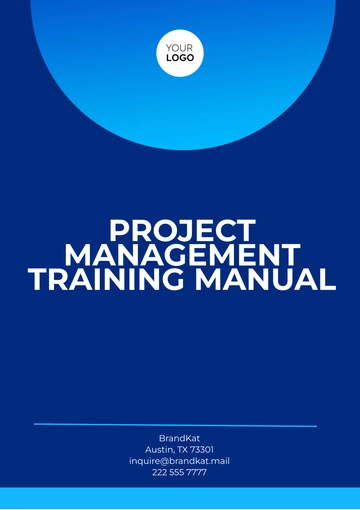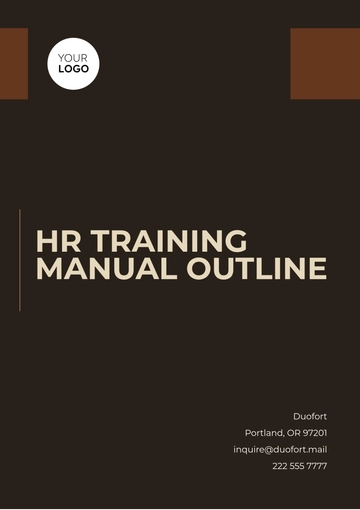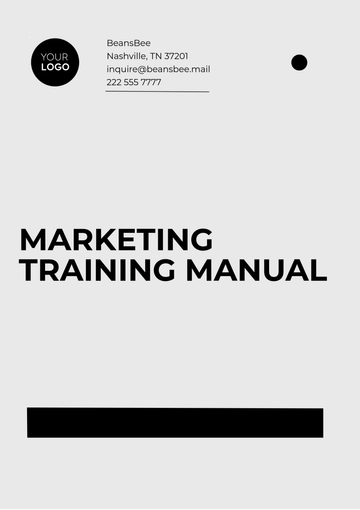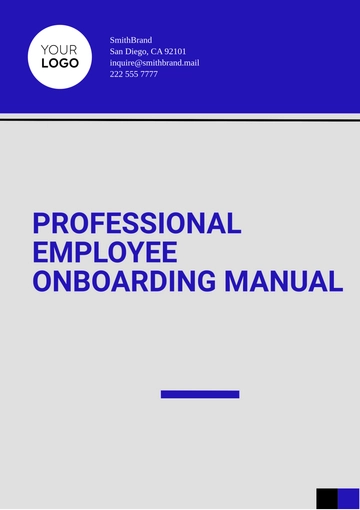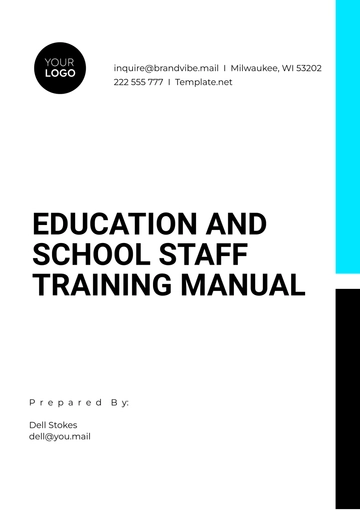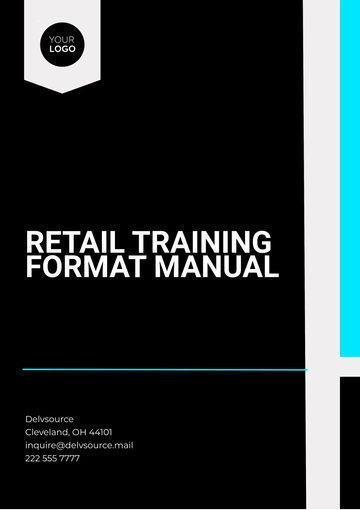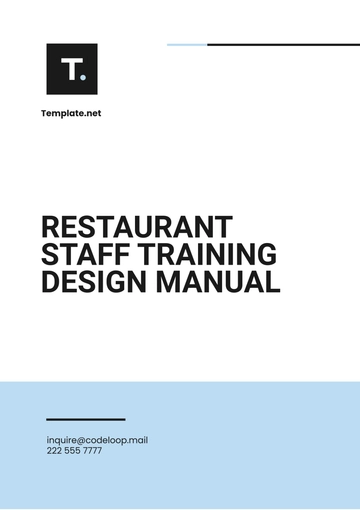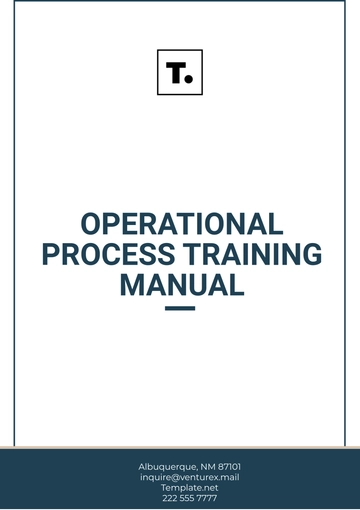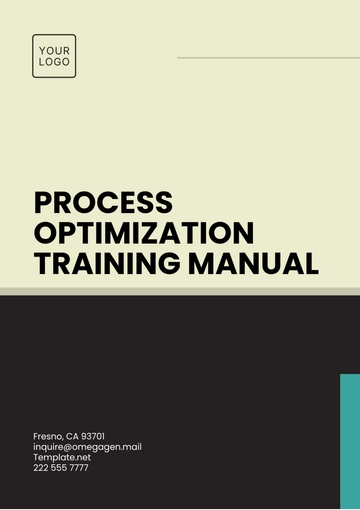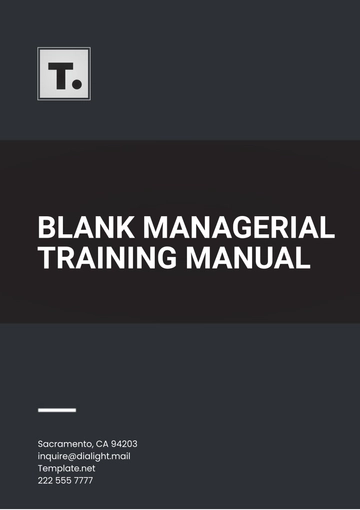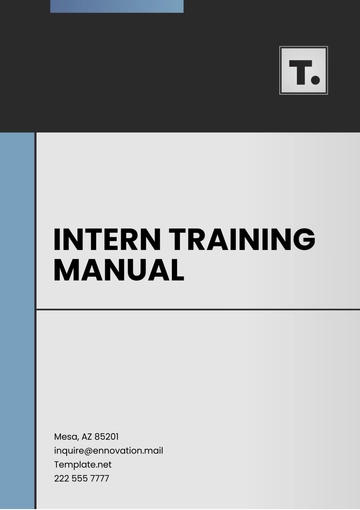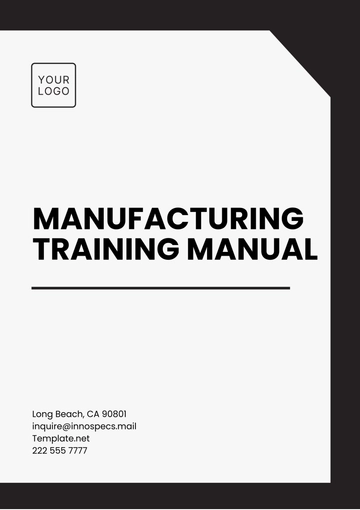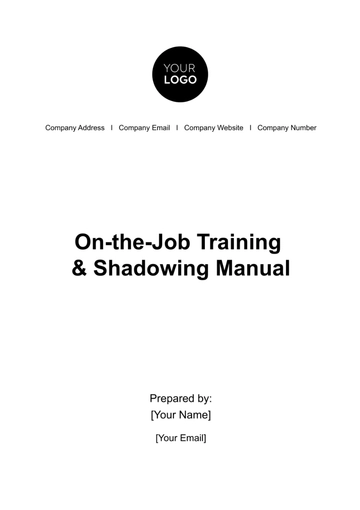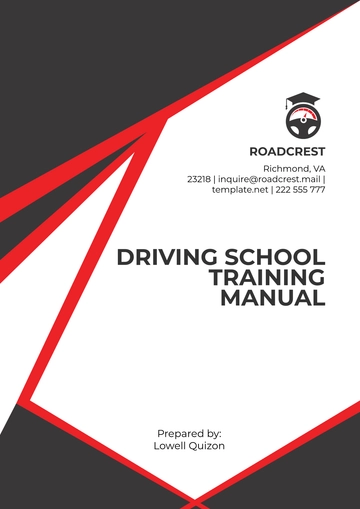Free Blank Managerial Training Manual
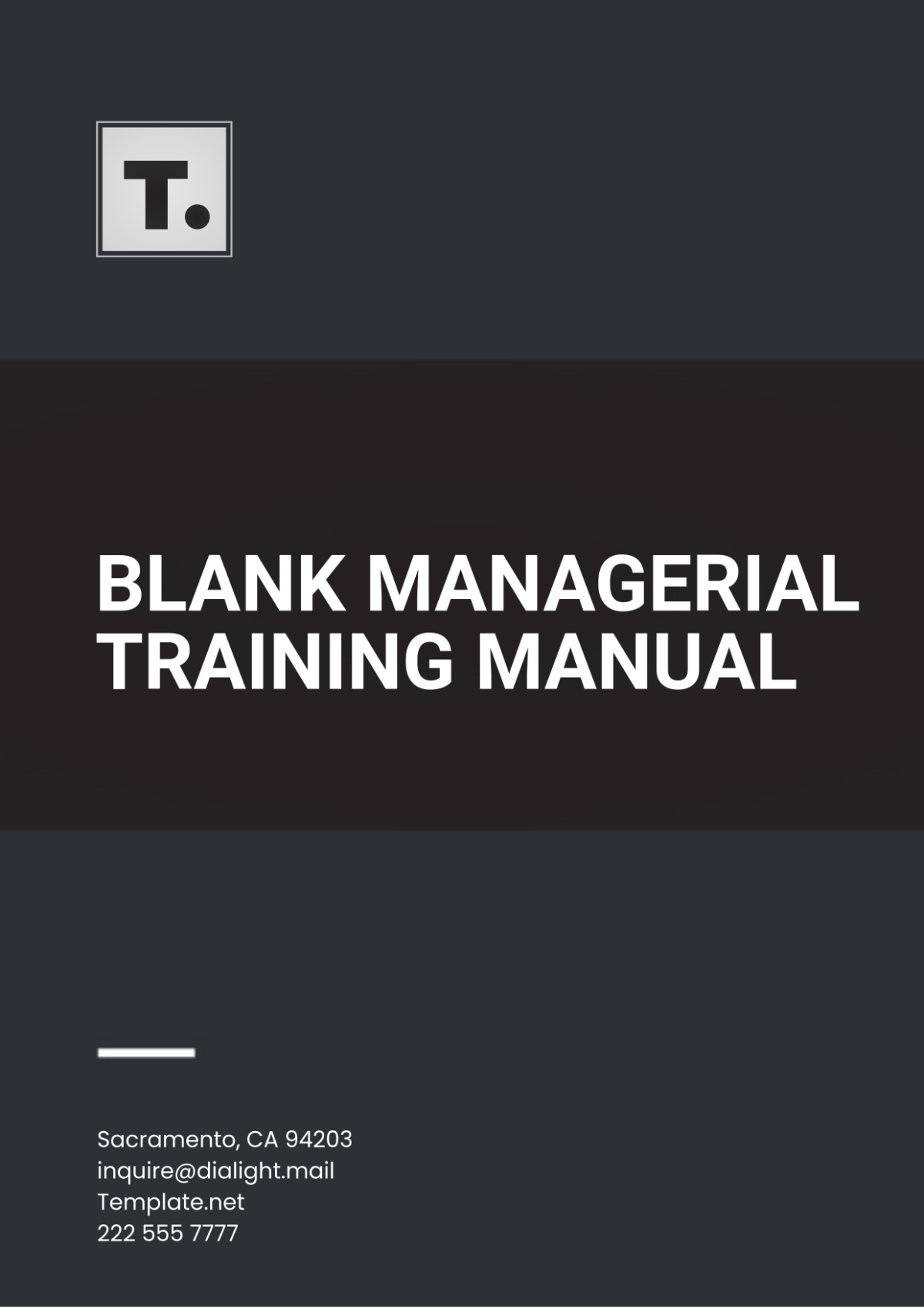
Prepared by: [Your Company Name]
Date: [Date]
I. Introduction
The purpose of this training manual is to equip managers with the knowledge and skills needed to lead their teams effectively. In today’s dynamic business environment, the role of a manager extends beyond mere oversight; it involves fostering an engaging workplace culture, driving performance, and aligning team goals with organizational objectives. This manual encompasses guidelines, procedures, and best practices to ensure a consistent management approach across the organization. By following the directives outlined herein, managers will not only enhance their capabilities but also contribute to the overall success of the organization.
II. Company Policies and Procedures
A comprehensive understanding of company policies and procedures is crucial for managers to guide their teams and ensure compliance with organizational standards. Adherence to policies fosters a fair and equitable work environment, helping to mitigate risks and promote organizational integrity.
A. Overview of Company Policies
Employment Policies: These include hiring practices, employee rights, and workplace behavior expectations.
Health and Safety Regulations: Guidelines to maintain a safe working environment and comply with local health and safety laws.
Remote Work Policy: Standards for employees working from home, including communication expectations and performance metrics.
B. Compliance Requirements
Managers are responsible for ensuring that their teams comply with all relevant laws and regulations. This section covers:
Labor Laws: Understanding and adhering to wage, hour, and workplace safety laws.
Industry Regulations: Compliance with specific regulations pertinent to the organization’s industry, such as environmental laws for manufacturing companies.
Data Protection Policies: Ensuring that team members handle sensitive information in compliance with data privacy regulations like GDPR or HIPAA.
C. Ethical Standards
Ethical conduct is vital for maintaining trust within the organization. This section includes:
Code of Ethics: An outline of expected ethical behaviors, including honesty, integrity, and respect.
Conflict of Interest Policy: Guidance on recognizing and reporting potential conflicts of interest in decision-making processes.
D. Reporting Procedures
Clear reporting procedures help maintain transparency and accountability. This includes:
Incident Reporting: Steps for reporting accidents or violations of policy.
Whistleblower Policies: Protecting employees who report unethical behavior or misconduct.
III. Management Skills and Competencies
Managers must possess a diverse set of skills and competencies to handle various aspects of their roles effectively. Key skills include:
Skill | Description |
|---|---|
Decision-Making | Ability to analyze information and make informed decisions quickly. Managers should use tools such as SWOT analysis to evaluate options effectively. |
Time Management | Effective prioritization and organization to maximize productivity. Utilizing techniques like the Eisenhower Matrix can help in distinguishing between urgent and important tasks. |
Financial Acumen | Understanding of budgeting, forecasting, and financial analysis. Managers should be able to interpret financial statements and adjust team goals accordingly. |
Emotional Intelligence | The ability to recognize and manage one’s own emotions, as well as the emotions of others. High emotional intelligence can lead to better team dynamics and conflict resolution. |
Adaptability | The capacity to adjust strategies and approaches in response to changing circumstances. This skill is essential in navigating unexpected challenges. |
IV. Leadership and Team Management
Strong leadership is essential for motivating and guiding teams toward achieving organizational goals. This section emphasizes the importance of developing various leadership qualities.
A. Developing Leadership Qualities
Self-Assessment Tools: Encouraging managers to engage in self-reflection and seek feedback to identify their strengths and areas for improvement.
Leadership Styles: Understanding different leadership styles (e.g., transformational, transactional, servant leadership) and their impact on team dynamics.
B. Team Building Techniques
Team Retreats and Workshops: Planning activities that enhance team cohesion and collaboration.
Recognition Programs: Implementing initiatives that acknowledge and reward team achievements, fostering a positive work environment.
C. Delegation Strategies
Effective Delegation: Guidelines on how to delegate tasks appropriately, ensuring team members feel empowered and responsible.
Monitoring Progress: Tools and techniques for tracking delegated tasks and providing support when needed.
D. Fostering a Collaborative Environment
Creating Inclusive Workspaces: Strategies for promoting diversity and inclusion within teams.
Facilitating Open Dialogue: Encouraging regular team meetings and feedback sessions to enhance communication and collaboration.
V. Performance Management
Performance management involves setting goals, assessing progress, and providing feedback to ensure team members are aligned with the organization's objectives.
A. Setting SMART Goals
Specific, Measurable, Achievable, Relevant, Time-bound: This framework helps in setting clear and attainable objectives for team members.
Goal Alignment: Ensuring individual goals are aligned with departmental and organizational objectives to foster a sense of purpose.
B. Conducting Performance Reviews
Review Cycle: Guidelines on scheduling and conducting performance evaluations on a semi-annual or annual basis.
Utilizing Performance Metrics: Using KPIs to assess employee performance objectively.
C. Providing Constructive Feedback
Feedback Techniques: Strategies for delivering feedback effectively, including the “sandwich method” (positive feedback, constructive criticism, positive closing).
Creating Action Plans: Develop specific improvement plans for team members based on feedback discussions.
D. Addressing Underperformance
Identifying Root Causes: Understanding the reasons behind underperformance, whether they stem from skills gaps, personal issues, or lack of motivation.
Intervention Strategies: Providing support through additional training, mentorship, or realignment of roles.
VI. Communication and Conflict Resolution
Effective communication and conflict resolution are key to maintaining a harmonious and productive workplace.
A. Active Listening Techniques
Listening Skills Training: Offering workshops that teach managers how to listen actively and empathetically to team members.
Feedback Loops: Establish channels for team members to share their thoughts and concerns regularly.
B. Negotiation Skills
Negotiation Strategies: Training on how to negotiate effectively, whether in resolving conflicts or in business dealings.
Understanding Different Perspectives: Encouraging managers to consider and respect differing viewpoints during discussions.
C. Conflict Resolution Strategies
Mediation Techniques: Training managers in mediation to facilitate resolution discussions among team members.
Implementing Conflict Resolution Policies: Establishing clear policies for addressing conflicts within the team.
D. Promoting Open Communication
Regular Check-ins: Encouraging managers to have one-on-one meetings with team members to foster open dialogue.
Utilizing Communication Tools: Promoting the use of collaboration platforms to enhance team communication.
VII. Training and Development Opportunities
Continuous learning and development are crucial for personal growth and maintaining a competitive workforce.
A. Identifying Development Needs
Conducting Skills Assessments: Regularly assessing the skills of team members to identify areas for growth.
Employee Surveys: Gathering feedback from employees regarding their desired training topics.
B. Creating Personal Development Plans
Customized Plans: Assisting managers in creating individualized development plans for their team members based on assessment results.
Setting Development Goals: Encouraging team members to set clear goals for their personal growth.
C. Available Training Programs
In-House Training Sessions: Offering regular training workshops on relevant topics, such as leadership, communication, and technical skills.
External Certifications: Providing resources for team members to pursue external certifications that benefit their roles.
D. Mentorship and Coaching
Mentorship Programs: Establishing formal mentorship initiatives that pair experienced managers with junior staff for guidance.
Coaching Opportunities: Encouraging managers to seek coaching for personal and professional development.
VIII. Appendices
The appendices section contains additional resources, templates, and references that managers may find useful.
A. Template Documents
Performance Review Templates: Standardized forms for conducting performance evaluations.
Goal Setting Templates: Tools for managers to assist team members in setting their SMART goals.
B. Reference Materials
Books and Articles: Suggested readings on management, leadership, and personal development.
Online Resources: Links to relevant webinars, e-learning platforms, and articles.
C. Contact Information for HR and Training Departments
HR Department: [Your Name], [Your Company Number], [Your Company Email]
- 100% Customizable, free editor
- Access 1 Million+ Templates, photo’s & graphics
- Download or share as a template
- Click and replace photos, graphics, text, backgrounds
- Resize, crop, AI write & more
- Access advanced editor
Create a personalized training experience with Template.net's Blank Managerial Training Manual Template. This fully editable and customizable template allows you to develop a unique training guide for managerial roles, covering leadership, decision-making, and team management. Editable in our Ai Editor Tool, it provides a flexible structure that you can easily adapt to your company's specific managerial training needs.
